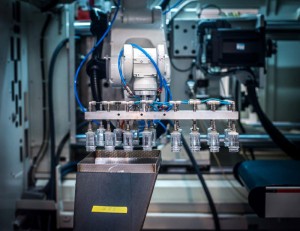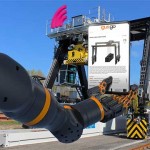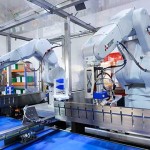Robotics impacting on the plastics industry
 Nigel Flowers, managing director of Sumitomo (SHI) Demag UK, examines the rise and fall of the robotic march in the plastics industry.
Nigel Flowers, managing director of Sumitomo (SHI) Demag UK, examines the rise and fall of the robotic march in the plastics industry.
A growing number of injection moulders are embracing automation with BARA reporting a 75% rise in robotic integration within the plastics industry between 2013 and 2014. This increase is reflected in our own figures: in 2012 around 25% of IM machines we sold had a robot feature and by 2014 this figure had risen to almost 32%.
The main reasons for this rise, in my view, are twofold. Firstly, the cash injection into the automotive industry at the start of the year has led to an increase in large machinery investment within this sector. Secondly industrial (6 axis) robots, which were historically deemed too expensive and complicated, are becoming easier to implement and have lower investment costs. Manufacturers are realising the potential these systems offer – the flexible, long term solutions coupled with the capability of handling new products and increasingly complex operations.
Packaging industry applications
In-mould labelling (IML) is a key element of the packaging sector and a prime area for automation which has really taken off across the UK and Europe as it offers clear operational efficiencies and improved graphics to maximise the on-shelf impact of consumer brands. Speed is all-important in this role, and IMM suppliers can integrate high-speed side-entry robots, incorporating label dispensing and placing technology.
For hygiene sensitive markets, such as medical and healthcare, it is possible to attach a robot to the frame of the IM machine, enabling manufacturers to automate functions like handling and packing within a compact and enclosed cleanroom-standard cell. Once you have the filter and laminar airflow, the robot is sitting in a cell that’s cleaner than the average operating theatre.
While in the long term I do not expect to see this growing trend continuing – largely due to the investment cycle within the automotive industry coming to a close – there are growing arguments that speed, yield, repeatability, reliability, multi-tasking and long-term cost saving are reasons why end users might opt for a robotic injection moulding solution. The latest robots are easier to integrate, and today’s improved designs often have fewer parts, making them easier to maintain. These include the new breed of collaborative robots (cobots) which are designed to work alongside the human workforce without fences around them.
Visit the Sumitomo Demag website for more information.
See all stories for Sumitomo Demag















